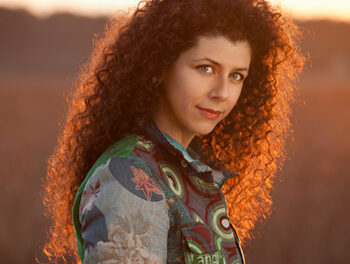A performance of Beethoven’s “Choral” Symphony was one of the highlights of the opening festivities for the then-newly-renovated Memorial Hall, at UNC, in the fall of 2005. At the time, we wrote: “Here’s hoping that the UNC [Symphony Orchestra’s] appearances [in UNC’s great hall] will not be limited to celebratory occasions. Indeed…, it would be nice if UNC student groups would routinely use Memorial, which is after all their hall as well as the University’s most prestigious venue. Perhaps in future seasons the bus-and-truckers and other visiting outfits can be scheduled after the home teams….” Well, that didn’t happen, and still doesn’t, routinely, but the orchestra did return to Memorial Hall on an off-night (a Monday) for a superb program, played better than any concert this listener can recall from this ensemble. The UNC Symphony Orchestra has long been the region’s largest, but Duke’s orchestra has been giving it a run for its money of late, and this time the numbers were down a bit – to a mere 86 on the roster. Still, this is larger than the NC Symphony has in recent years dreamed of being – its growth plans are currently on hold, due to the recession – so if one wishes to hear a full orchestra with a substantial number of strings, UNC or Duke are the places to go.
UNC is especially strong in the low strings department. There were seven basses and eleven cellos this time, and the viola section – eight more players – helped add heft to the proceedings, in the opening and closing numbers. The acoustics in Memorial are so far superior to Hill Hall ’s that, although the department’s own venue has recently had yet another face-lift, the sonic comparison makes the preferred venue clear: this large ensemble, especially, ought to be in Memorial all the time, period. In Memorial, clarity and definition are far superior, the softest passages register nicely, and the fortes and above, of which there were a good many in this program, emerge crisply and with decisive impact but don’t drive folks screaming from the room, holding their ears.
Things got underway with a regal performance of Elgar’s Pomp and Circumstance March No. 4 – not the familiar one, for a refreshing change. Music Director Tonu Kalam took just the right approach, and the playing was as resplendent as the music itself, so redolent of “Empire” in all the right senses.
Faculty artists Brooks de Wetter-Smith, flute, and Laura Smithburg Byrne, harp, then took the stage before a reduced orchestra for Mozart’s Concerto for Flute and Harp, K.299. Laurie McManus’ excellent program note reminded us that this is one of the master’s most popular concerti; that prompt was helpful, for to tell the truth it is very rarely played, perhaps because of the demands it makes on the two solo artists. These are outstanding players, however, and their performances, singly and together, were absolutely first rate. So, too, was the work of the orchestra, from which Kalam elicited not only precision and nuances but also spirit – the joie de vivre of the opening and closing movements is remarkable, and the slow movement is truly one of Mozart’s most sublime little creations – making it all the more strange that it is so rarely played in concert.
The grand finale was the Second Suite from Prokofiev’s Romeo and Juliet, and even with the sound of the Kirov Orchestra lingering in the mind’s ears (their two Memorial Hall concerts last fall included several Prokofiev scores), the work of this orchestra, whose members are mostly students, was impressive. Instead of the usual pastiche of bits and pieces from the score, strung together by conductors somewhat ad lib, Kalam selected the second of three suites the composer himself prepared. It’s the best known of the three, and it’s the one Prokofiev himself recorded, in 1943 (a somewhat dim-sounding CD transfer of the 10” 78 album is on Dutton CDBP 9754*). And for some of us, including this writer, this is the greatest of all the full-evening ballet scores, period. In Chapel Hill, the UNCSO did the music proud, reveling in its sharp dynamic contrasts and making the most, especially, of the growling lower end of the audio spectrum, thanks to low winds, low brass, and those aforementioned low strings, whose richness could be felt as well as heard. The moderate crowd – that the orchestra usually plays on Tuesdays may have been a factor – gave the artists a rousing round of applause, punctuated with cheers.
PS Prior to the performance, the long service – 60 years! – of violinist Mary Ellen Bierck was saluted and recognized with a plaque. She retired last year, having joined the orchestra in 1948. That should say something to unhappy back-deskers – this woman loves music, plain and simple!
*As it happens, Pristine Classical has remastered Prokofiev’s recordings of the R&J Suite No. 2 and the Piano Concerto No. 3 in a new release published May 1, 2009. See http://www.pristineclassical.com/LargeWorks/Orchestral/PASC160.php for details. Fwiw, Pristine dates the R&J as a 1938 recording….











